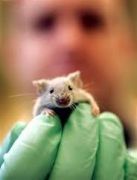Researchers Find 'Cure' for Rheumatoid Arthritis in Mice
Researchers at ETH Zurich who were studying mice with rheumatoid arthritis found a product that cured the animals of the condition as a precursor to what could be a much larger and beneficial discovery for humans. A statement from the company said the therapy is an "active substance consisting of two fused components."

European researchers may have found a key to unlocking a cure for rheumatoid arthritis.
Researchers at ETH Zurich who were studying mice with rheumatoid arthritis found a product that cured the animals of the condition as a precursor to what could be a much larger and beneficial discovery for humans. A statement from the company said the therapy is an “active substance consisting of two fused components.”
One key part in the equation is the patient’s own immune messenger interleukin 4 (IL-4), which has already been proven in previous studies to play a role in preventing cartilage and bone damage. The second part of the therapy was described in the statement as being an antibody to the IL-4 which “binds to a form of a protein that is found only in inflamed tissue in certain diseases (and in tumor tissue.)”
Pharmacist Teresa Hemmerle said the IL-4 is then able to “reach the site of the disease when the fusion molecule is injected into the body.” She added, “It allows us to concentrate the active substance at the site of the disease. The concentration in the rest of the body is minimal, which reduces side-effects.”
The study was conducted with a CTI project with Philochem, an ETCH spin-off, according to the statement. The mice, with “inflamed toes and paws,” were treated with the fusion combination and dexamethasone, which is an anti-inflammatory already on the market.
Results showed that separately the two treatments slowed, but did not stop, the progress of the condition. When used in tandem “the typical signs of arthritis, such as swollen toes and paws, disappeared within a few days when both medications were administered at the same time.” As the pain subsided the researchers also noted a return to normalcy in several of the animal’s blood levels.
Looking at the data, Hemmerle concluded that “this combined treatment creates a long-term cure.”
Since the study concluded Hemmerle reported starting to work for Philochem as a continuation of the project. As a result of the early success, the company announced it is preparing for human trials of the drug, which should begin in 2015.